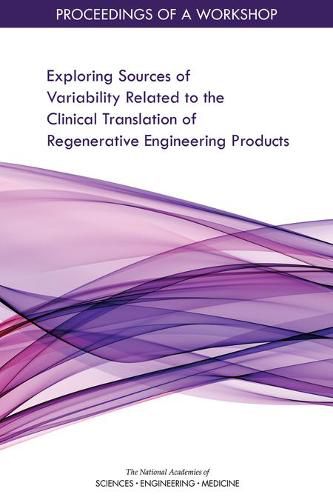Readings Newsletter
Become a Readings Member to make your shopping experience even easier.
Sign in or sign up for free!
You’re not far away from qualifying for FREE standard shipping within Australia
You’ve qualified for FREE standard shipping within Australia
The cart is loading…






The emerging multidisciplinary field of regenerative engineering is devoted to the repair, regeneration, and replacement of damaged tissues or organs in the body. To accomplish this it uses a combination of principles and technologies from disciplines such as advanced materials science, developmental and stem cell biology, immunology, physics, and clinical translation. The term regenerative engineering reflects a new understanding of the use of tissue engineering for regeneration and also the growing number of research and product development efforts that incorporate elements from a variety of fields. Because regenerative engineered therapies rely on live cells and scaffolds, there are inherent challenges in quality control arising from variability in source and final products. Furthermore, each patient recipient, tissue donor, and product application is unique, meaning that the field faces complexities in the development of safe and effective new products and therapies which are not faced by developers of more conventional therapies. Understanding the many sources of variability can help reduce this variability and ensure consistent results.
The Forum on Regenerative Medicine hosted a public workshop on October 18, 2018, in Washington, DC, to explore the various factors that must be taken into account in order to develop successful regenerative engineering products. Invited speakers and participants discussed factors and sources of variability in the development and clinical application of regenerative engineering products, characteristics of high-quality products, and how different clinical needs, models, and contexts can inform the development of a product to improve patient outcomes. This publication summarizes the presentation and discussion of the workshop.
$9.00 standard shipping within Australia
FREE standard shipping within Australia for orders over $100.00
Express & International shipping calculated at checkout
The emerging multidisciplinary field of regenerative engineering is devoted to the repair, regeneration, and replacement of damaged tissues or organs in the body. To accomplish this it uses a combination of principles and technologies from disciplines such as advanced materials science, developmental and stem cell biology, immunology, physics, and clinical translation. The term regenerative engineering reflects a new understanding of the use of tissue engineering for regeneration and also the growing number of research and product development efforts that incorporate elements from a variety of fields. Because regenerative engineered therapies rely on live cells and scaffolds, there are inherent challenges in quality control arising from variability in source and final products. Furthermore, each patient recipient, tissue donor, and product application is unique, meaning that the field faces complexities in the development of safe and effective new products and therapies which are not faced by developers of more conventional therapies. Understanding the many sources of variability can help reduce this variability and ensure consistent results.
The Forum on Regenerative Medicine hosted a public workshop on October 18, 2018, in Washington, DC, to explore the various factors that must be taken into account in order to develop successful regenerative engineering products. Invited speakers and participants discussed factors and sources of variability in the development and clinical application of regenerative engineering products, characteristics of high-quality products, and how different clinical needs, models, and contexts can inform the development of a product to improve patient outcomes. This publication summarizes the presentation and discussion of the workshop.